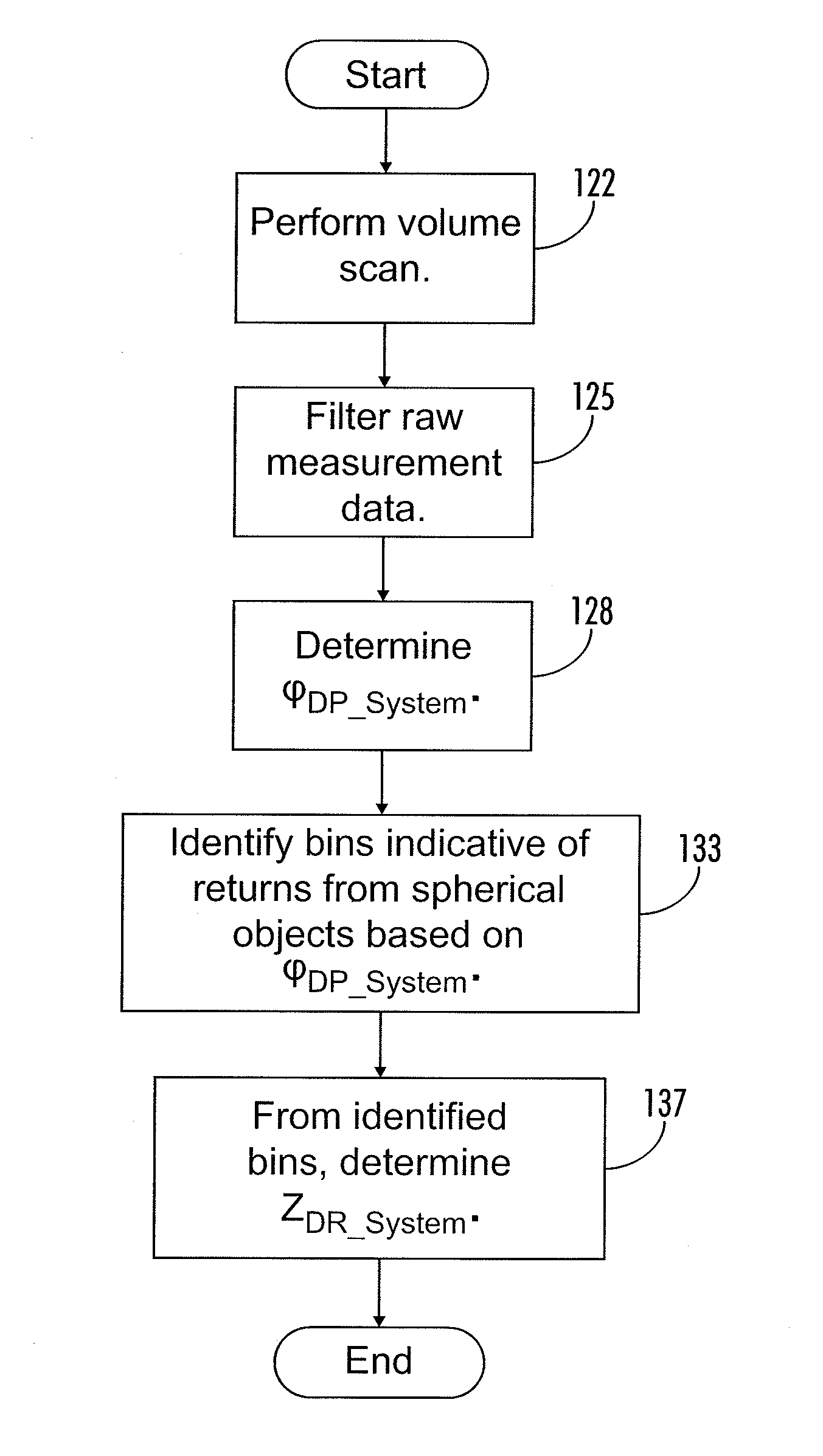Systems and methods for calibrating dual polarization radar systems
a dual-polarization radar and system technology, applied in the field of dual-polarization radar systems, can solve the problems of many conventional calibration processes not being able to be performed while data is being collected, error causing inaccuracy in raw measurement data, and the normal operation of the radar system must be undetectedly suspended
- Summary
- Abstract
- Description
- Claims
- Application Information
AI Technical Summary
Benefits of technology
Problems solved by technology
Method used
Image
Examples
Embodiment Construction
[0029]The present disclosure generally relates to systems and methods for calibrating dual polarization radar systems. In one exemplary embodiment, a dual polarization radar system is calibrated based on real-time data measurements, such as measured horizontal and vertical reflectivities, ZH and ZV. In this regard, the radar system analyzes the reflected power measurements to identify which measurements are associated with reflections from spherical objects.
[0030]For simultaneous transmission systems, the differential reflectivity ZDR is ideally equal to zero, and the differential reflectivity indicated by the identified measurements is attributable to the system's differential reflectivity (ZDR—system). In this regard, for an actual differential reflectivity measurement, the measured differential reflectivity (ZDR) can be expressed according to the following equation:
ZDR=(ZH−ZV)+ZDR—System. [in dB]
For a perfectly spherical target, (ZH−ZV) should be equal to zero such that the measu...
PUM
 Login to View More
Login to View More Abstract
Description
Claims
Application Information
 Login to View More
Login to View More - R&D
- Intellectual Property
- Life Sciences
- Materials
- Tech Scout
- Unparalleled Data Quality
- Higher Quality Content
- 60% Fewer Hallucinations
Browse by: Latest US Patents, China's latest patents, Technical Efficacy Thesaurus, Application Domain, Technology Topic, Popular Technical Reports.
© 2025 PatSnap. All rights reserved.Legal|Privacy policy|Modern Slavery Act Transparency Statement|Sitemap|About US| Contact US: help@patsnap.com



